Possible Role of Peroxynitrite in the Responses Induced by Fusicoccin in Plant Cultured Cells
Abstract
1. Introduction
2. Results
2.1. Effect of FC and Urate on RNS Accumulation in the Cells
2.2. Effect of FC and Urate on Cell Viability and on Accumulation of TUNEL-Positive Cells
2.3. Effect of FC and Urate on Accumulation of O2− and Malondialdehyde and on Caspase-3-Like Activity
2.4. Effects of FC and Urate on Stress-Related Proteins
3. Discussion
3.1. Effect of FC and Urate on ONOO− Accumulation in the Cells
3.2. Effect of FC and Urate on Cell Death and on Accumulation of TUNEL-Positive Cells
3.3. Effect of FC and Urate on O2− and MDA Accumulation
3.4. Effect of FC and Urate on Caspase-3-Like Activity and on the Release of Cytochrome c from Mitochondria
3.5. Effect of FC and Urate on the Levels of Mitochondrial Hsp90, Microsomal BiP, and Cytosolic 14-3-3 Proteins
3.6. Future Research Directions
4. Material and Methods
4.1. Cell Culture Growth and Experimental Design
4.2. Cell Viability Assay and Determination of Cells Undergoing PCD
4.3. O2− Assay and RNS Imaging
4.4. Activity of Caspase-3-Like Proteases and Level of Lipid Peroxidation
4.5. Cell Fraction Preparation, SDS-PAGE and Protein Gel Blot Analysis
4.6. Statistical Analyses
5. Conclusions
Author Contributions
Funding
Institutional Review Board Statement
Informed Consent Statement
Acknowledgments
Conflicts of Interest
Abbreviations
References
- Marrè, E. Fusicoccin: A tool in plant physiology. Ann. Rev. Plant Physiol. 1979, 30, 273–288. [Google Scholar] [CrossRef]
- Palmgren, M.G. Plant plasma membrane H+-ATPases: Powerhouses for nutrient uptake. Ann. Rev. Plant Physiol. Plant Mol. Biol. 2001, 52, 817–845. [Google Scholar] [CrossRef] [PubMed]
- Meyer, C.; Waldkötter, K.; Sprenger, A.; Schlösser, U.G.; Luther, M.; Weiler, E.W. Survey for the taxonomic and tissue distribution of microsomal binding sites for the non-host selective fungal phytotoxin fusicoccin. Z. Naturforrsch. C. 1993, 48, 595–602. [Google Scholar] [CrossRef]
- Bunney, T.D.; De Boer, A.H.; Levin, M. Fusicoccin signaling reveals 14-3-3 protein function as a novel step in left-right patterning during amphibian embryogenesis. Development 2003, 130, 4847–4858. [Google Scholar] [CrossRef] [PubMed]
- Aitken, A.; Collinge, D.B.; van Heusden, B.P.; Isobe, T.; Roseboom, P.H.; Rosenfeld, G.; Soll, J. 14-3-3 proteins: A highly conserved, widespread family of eukaryotic proteins. Trends Biochem. Sci. 1992, 17, 498–502. [Google Scholar] [CrossRef]
- Freeman, A.K.; Morrison, D.K. 14-3-3 proteins: Diverse functions in cell proliferation and cancer progression. Semin. Cell. Dev. Biol. 2011, 22, 681–687. [Google Scholar] [CrossRef]
- Honma, Y. Cotylenin A-a plant growth regulator as a differentiation-inducing agent against myeloma leukemia. Leuk. Lymphoma 2002, 43, 1169–1178. [Google Scholar] [CrossRef] [PubMed]
- Rodolfo, C.; Rocco, M.; Cattaneo, L.; Tartaglia, M.; Sassi, M.; Aducci, P.; Scaloni, A.; Camoni, L.; Marra, M. Ophiolobin A induces autofagy and activates the mitochondrial pathway of apoptosis in human melanoma cells. PLoS ONE 2016, 11, e0167672. [Google Scholar] [CrossRef] [PubMed]
- De Wries-van Leeuwen, I.J.; Kortekaas-Thijssen, C.; Nzigou Mandouckou, J.A.; Kas, S.; Evidente, A.; De Boer, A.H. Fusicoccin-A selectively induces apoptosis in tumor cells after interferon-alpha priming. Cancer Lett. 2010, 293, 198–206. [Google Scholar] [CrossRef] [PubMed]
- Bury, M.; Andolfi, A.; Rogister, B.; Cimmino, A.; Mégalizzi, V.; Mathieu, V.; Berger, W.; Evidente, A.; Kiss, R. Fusicoccin A, a phytotoxic carbotricyclic diterpene glucoside of fingal origin, reduces proliferation and invasion of glioblastoma cells by targeting multiple tyrosine kinases. Transl. Oncol. 2013, 6, 112–123. [Google Scholar] [CrossRef]
- Kaplan, A.; Morquette, B.; Kroner, A.; Leong, S.; Madwar, C.; Sanz, R.; Banerjee, S.L.; Antel, J.; Bisson, N.; David, S.; et al. Small-molecule stabilization of 14-3-3 protein-protein interactions stimulates axon regeneration. Neuron 2017, 93, 1082–1093.e5. [Google Scholar] [CrossRef] [PubMed]
- Kaplan, A.; Ottmann, C.; Fournier, A.E. 14-3-3 adaptor protein-protein interactions as therapeutic targets for CNS diseases. Pharmacol. Res. 2017, 125, 114–121. [Google Scholar] [CrossRef] [PubMed]
- Camoni, L.; Visconti, S.; Aducci, P.; Marra, M. From plant physiology to pharmacology: Fusicoccin leaves the leaves. Planta 2019, 249, 49–57. [Google Scholar] [CrossRef] [PubMed]
- Malerba, M.; Crosti, P.; Cerana, R. Ethylene is involved in stress responses induced by fusicoccin in sycamore cultured cells. J. Plant Physiol. 2010, 167, 1442–1447. [Google Scholar] [CrossRef] [PubMed]
- Hancock, J.T. Harnessing evolutionary toxins for signaling: Reactive oxygen species, nitric oxide and hydrogen sulfide in plant cell regulation. Front. Plant Sci. 2016. [Google Scholar] [CrossRef]
- Malerba, M.; Crosti, P.; Cerana, R.; Bianchetti, R. Fusicoccin stimulates the production of H2O2 in sycamore cell cultures and induces alternative respiration and cytochrome c leakage from mitochondria. Physiol. Plant. 2003, 119, 480–488. [Google Scholar] [CrossRef]
- Malerba, M.; Contran, N.; Tonelli, M.; Crosti, P.; Cerana, R. Role of nitric oxide in actin depolymerization and programmed cell death induced by fusicoccin in sycamore cultured cells. Physiol. Plant. 2008, 133, 449–457. [Google Scholar] [CrossRef]
- Farnese, F.S.; Menezes-Silva, P.E.; Gusman, G.S.; Oliveira, J.A. When bad guys become good ones: The key role of reactive oxygen species and nitric oxide in the plant responses to abiotic stress. Front. Plant Sci. 2016, 7. [Google Scholar] [CrossRef]
- Hasanuzzaman, M.; Nahar, K.; Alam, M.M.; Roychowdhury, R.; Fujita, M. Physiological, biochemical, and molecular mechanisms of heat stress tolerance in plants. Int. J. Mol. Sci. 2013, 14, 9643–9684. [Google Scholar] [CrossRef]
- Pacher, P.; Beckman, J.S.; Liaudet, L. Nitric oxide and peroxynitrite in health and disease. Physiol. Rev. 2007, 87, 315–424. [Google Scholar] [CrossRef]
- Vandelle, E.; Delledonne, M. Peroxynitrite formation and function in plants. Plant Sci. 2011, 181, 534–539. [Google Scholar] [CrossRef] [PubMed]
- Arasimowicz-Jelonek, M.; Floryszak-Wieczorek, J. Understanding the fate of peroxynitrite in plant cells—From physiology to pathophysiology. Phytochemistry 2011, 72, 681–688. [Google Scholar] [CrossRef] [PubMed]
- Koul, A.; Sharma, M.; Metha, M.; Mallubhotla, S.; Bhushan, I. Reactive oxygen and nitrogen species: Key players in plant response to stress. Plant Cell Biotechnol. Mol. Biol. 2020, 21, 34–43. [Google Scholar]
- Gaupels, F.; Spiazzi-Vandelle, E.; Yang, D.; Delledonne, M. Detection of peroxynitrite accumulation in Arabidopsis thaliana during the hypersensitive defense response. Nitr. Ox. 2011, 25, 222–228. [Google Scholar] [CrossRef] [PubMed]
- Malerba, M.; Cerana, R.; Crosti, P. Fusicoccin induces in plant cells a programmed cell death showing apoptotic features. Protoplasma 2003, 222, 113–116. [Google Scholar] [CrossRef] [PubMed]
- Lam, E. Controlled cell death, plant survival and development. Nat. Rev. Mol. Cell. Biol. 2004, 5, 305–315. [Google Scholar] [CrossRef] [PubMed]
- Malerba, M.; Cerana, R. Role of peroxynitrite in the responses induced by heat stress in tobacco BY-2 cultured cells. Protoplasma 2018, 255, 1079–1087. [Google Scholar] [CrossRef]
- Contran, N.; Cerana, R.; Crosti, P.; Malerba, M. Cyclosporin A inhibits programmed cell death and cytochrome c release induced by fusicoccin in sycamore cells. Protoplasma 2007, 231, 193–199. [Google Scholar] [CrossRef]
- Saito, S.; Yamamoto-Katou, A.; Yoshioka, H.; Doke, N.; Kawakita, K. Peroxynitrite generation and tyrosine nitration in defense responses in tobacco BY-2 cells. Plant Cell Physiol. 2006, 47, 689–697. [Google Scholar] [CrossRef]
- Sakamoto, A.; Sakurao, S.; Fukunaga, K.; Matsubara, T.; Ueda-Hashimoto, M.; Tsukamoto, S.; Takahashi, M.; Morikawa, H. Three distinct Arabidopsis hemoglobins exhibit peroxidase-like activity and differentially mediate nitrite-dependent protein nitration. FEBS Lett. 2004, 572, 27–32. [Google Scholar] [CrossRef]
- Sun, Z.N.; Wang, H.L.; Liu, F.Q.; Chen, Y.; Tam, P.K.H.; Yang, D. BODIPY-based fluorescent probe for peroxynitrite detection and imaging in living cells. Org. Lett. 2009, 11, 1187–1190. [Google Scholar] [CrossRef] [PubMed]
- Serrano, I.; Romero-Puertas, M.C.; Rodríguez Serrano, M.; Sandalio, L.M.; Olmedilla, A. Role of peroxynitrite in programmed cell death induced in self-incompatible pollen. Plant Signal. Behav. 2012, 7, 779–781. [Google Scholar] [CrossRef] [PubMed]
- Contran, N.; Tonelli, M.G.; Crosti, P.; Cerana, R.; Malerba, M. Antioxidant system in programmed cell death of sycamore (Acer pseudoplatanus L.) cultured cells. Acta Physiol. Plant. 2012, 34, 617–629. [Google Scholar] [CrossRef]
- Hancock, J.T.; Neill, S.J. Nitric oxide: Its generation and interactions with other reactive signaling compounds. Plants. 2019, 8, 41. [Google Scholar] [CrossRef] [PubMed]
- Piszczek, E.; Gutman, W. Caspase-like proteases and their role in programmed cell death in plants. Acta Physiol. Plant. 2007, 29, 391–398. [Google Scholar] [CrossRef]
- Belenghi, B.; Romero-Puertas, M.C.; Vercammen, D.; Brackenier, A.; Inzé, D.; Delledonne, M.; van Breusegem, F. Metacaspase activity of Arabidopsis thaliana is regulated by S-nitrosylation of a critical cysteine residue. J. Biol. Chem. 2007, 282, 1352–1358. [Google Scholar] [CrossRef]
- Sandoval, M.; Zhang, X.J.; Liu, X.; Mannick, E.E.; Clark, D.A.; Miller, M.J.S. Peroxynitrite-induced apoptosis in T84 and raw 264.7 cells: Attenuation by L-ascorbic acid. Free Radic. Biol. Med. 1997, 22, 489–495. [Google Scholar] [CrossRef]
- Niles, J.C.; Wishnok, J.S.; Tannenbau, S.R. Peroxynitrite-induced oxidation and nitration products of guanine 8-oxoguanine: Structures and mechanisms of product formation. Nitr. Ox. 2006, 14, 109–121. [Google Scholar] [CrossRef]
- Marsoni, M.; Cantara, C.; De Pinto, M.C.; Gadatela, C.; De Gara, L.; Bracale, M.; Vannini, C. Exploring the soluble proteome of Tobacco Bright Yellow-2 cells at the switch towards different cell fates in response to heat shocks. Plant Cell Environ. 2010, 33, 1161–1175. [Google Scholar]
- Kadota, Y.; Shirazu, K. The HSP90 complex of plants. Biochim. Biophys. Acta 2012, 1823, 689–697. [Google Scholar] [CrossRef]
- Kang, B.H.; Plescia, J.; Dohi, T.; Rosa, J.; Doxsey, S.J.; Altieri, D.C. Regulation of tumor cell mitochondrial homeostasis by an organelle-specific Hsp90 chaperone network. Cell 2007, 131, 257–270. [Google Scholar] [CrossRef] [PubMed]
- Altieri, D.C.; Stein, G.S.; Lian, J.B.; Languino, L.R. TRAP-1 the mitochondrial Hsp90. Biochim. Biophys. Acta 2012, 1823, 767–773. [Google Scholar] [CrossRef] [PubMed]
- Nagata, T.; Nemoto, Y.; Hasezawa, S. Tobacco BY-2 cell line as the “HeLa” cell in the cell biology of higher plants. Int. Rev. Cytol. 1992, 132, 1–30. [Google Scholar]
- Urade, R. Cellular response to unfolded proteins in the endoplasmic reticulum of plants. FEBS J. 2007, 274, 1152–1171. [Google Scholar] [CrossRef] [PubMed]
- Yang, X.; Srivastava, R.; Stephen, H.; Howell, S.H.; Bassham, D.C. Activation of autophagy by unfolded proteins during endoplasmic reticulum stress. Plant J. 2016, 85, 83–95. [Google Scholar] [CrossRef] [PubMed]
- Lozano-Durán, R.; Robatzek, S. 14-3-3 proteins in plant-pathogen interactions. Mol. Plant Mic. Inter. 2015, 28, 511–518. [Google Scholar] [CrossRef] [PubMed]
- Alamillo, J.M.; García-Olmedo, F. Effects of urate, a natural scavenger of peroxynitrite-mediated toxicity, in the response of Arabidopsis thaliana to the bacterial pathogen Pseudomonas syringae. Plant J. 2001, 25, 529–540. [Google Scholar] [CrossRef]
- Arasimowicz-Jelonek, M.; Floryszak-Wieczorek, J.; Izbiańska, K.; Gzyl, J.; Jelonek, T. Implication of peroxynitrite in defence responses of potato to Phytophthora infestans. Plant Pathol. 2016, 65, 754–766. [Google Scholar] [CrossRef]
- Gzyl., J.; Izbiańska, K.; Floryszak-Wieczorek, J.; Jelonek, T.; Arasimowicz-Jelonek, M. Cadmium affects peroxynitrite generation and tyrosine nitration in seedling roots of soybean (Glycine max L.). Environ. Exp. Bot. 2016, 131, 155–163. [Google Scholar] [CrossRef]
- Changxia, L.; Dengjing, H.; Chunlei, W.; Ni, W.; Yandong, Y.; Weifang, L.; Weibiao, L. NO is involved in H2-induced adventitious rooting in cucumber by regulating the expression and interaction of plasma membrane H+-ATPase and 14-3-3. Planta 2020, 252. [Google Scholar] [CrossRef]
- Yuan, S.; Gopal, J.V.; Ren, S.; Chen, L.; Liu, L.; Gao, Z. Anticancer fungal natural products: Mechanisms of action and biosynthesis. Eur. J. Medicin. Chem. 2020, 202, 112502. [Google Scholar] [CrossRef] [PubMed]
- Harmange Magnani, C.S.; Maimone, T.J. Fusicoccin keeps getting stickier: Modulation of an adaptor protein interactome with a molecular glue leads to neurite outgrowth. Cell Chem. Biol. 2020, 27, 635–637. [Google Scholar] [CrossRef] [PubMed]
- Malerba, M.; Crosti, P.; Cerana, R. Defense/stress responses activated by chitosan in sycamore cultured cells. Protoplasma 2011, 249, 89–98. [Google Scholar] [CrossRef] [PubMed]
- Crosti, P.; Malerba, M.; Bianchetti, R. Tunicamycin and Brefeldin A induce in plant cells a programmed cell death showing apoptotic features. Protoplasma 2001, 216, 31–38. [Google Scholar] [CrossRef]
- Staszek, P.; Gniazdowska, A. Peroxynitrite induced signaling pathways in plant response to non-proteinogenic amino acids. Planta 2020, 252, 5. [Google Scholar] [CrossRef]
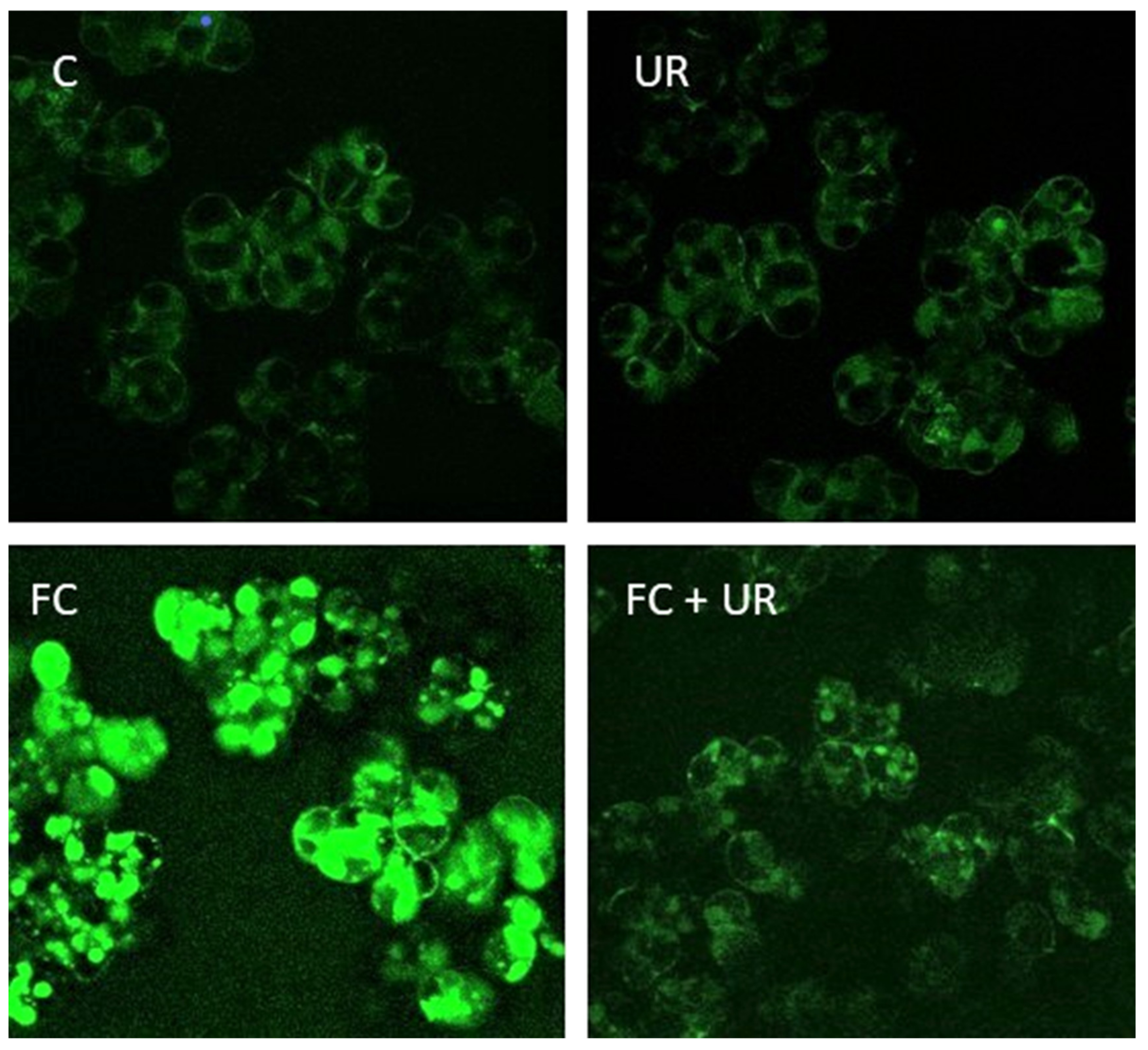

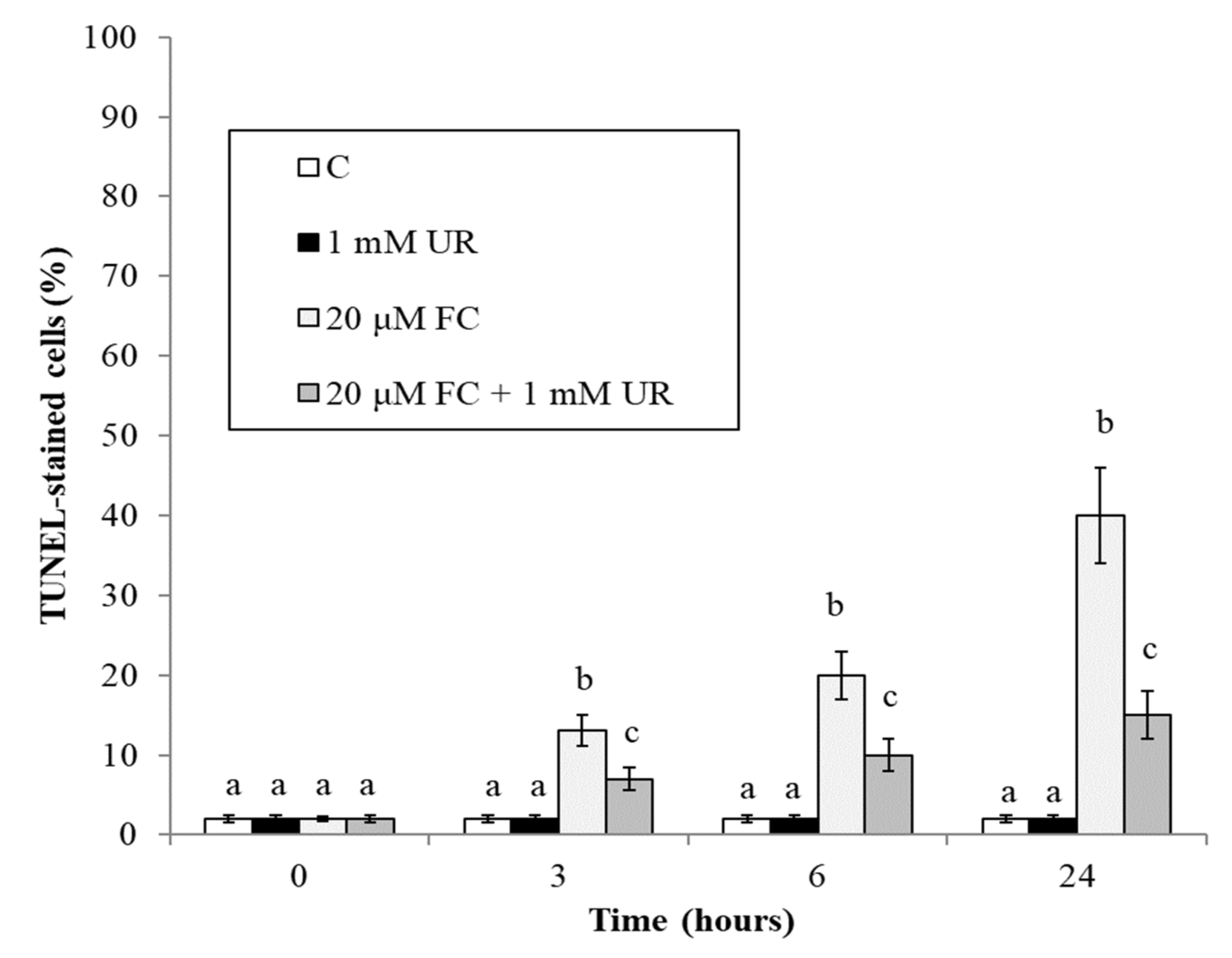
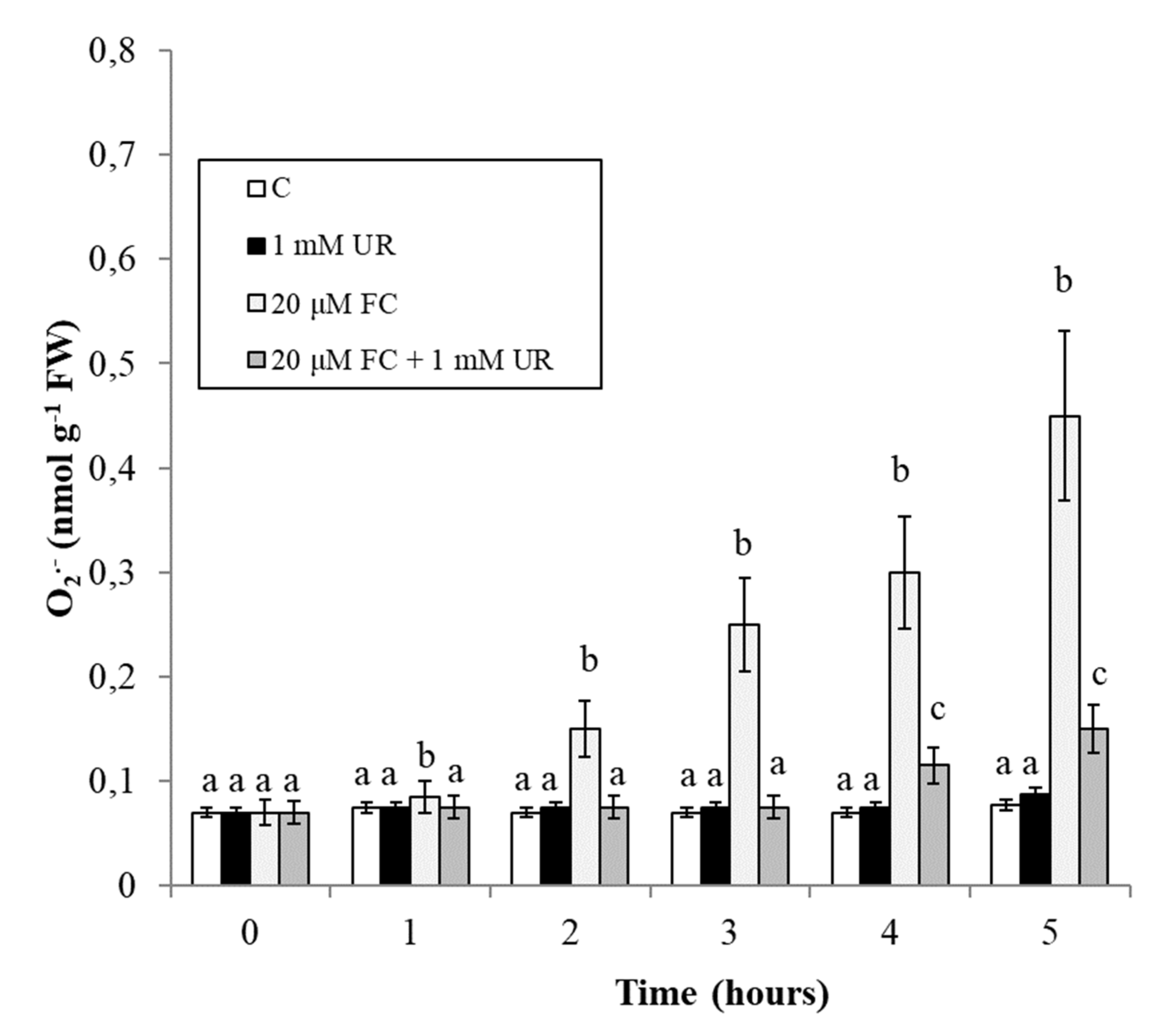

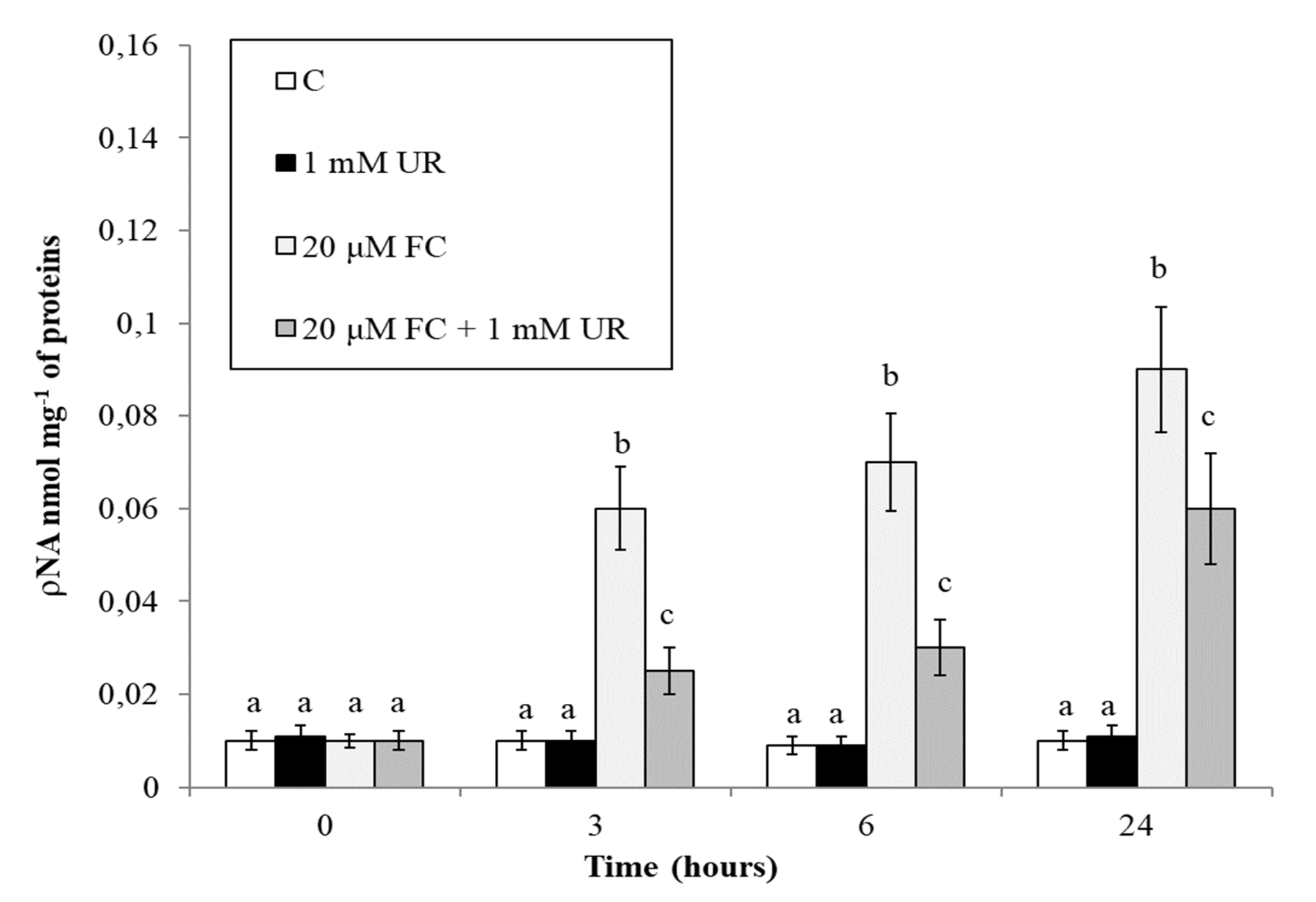
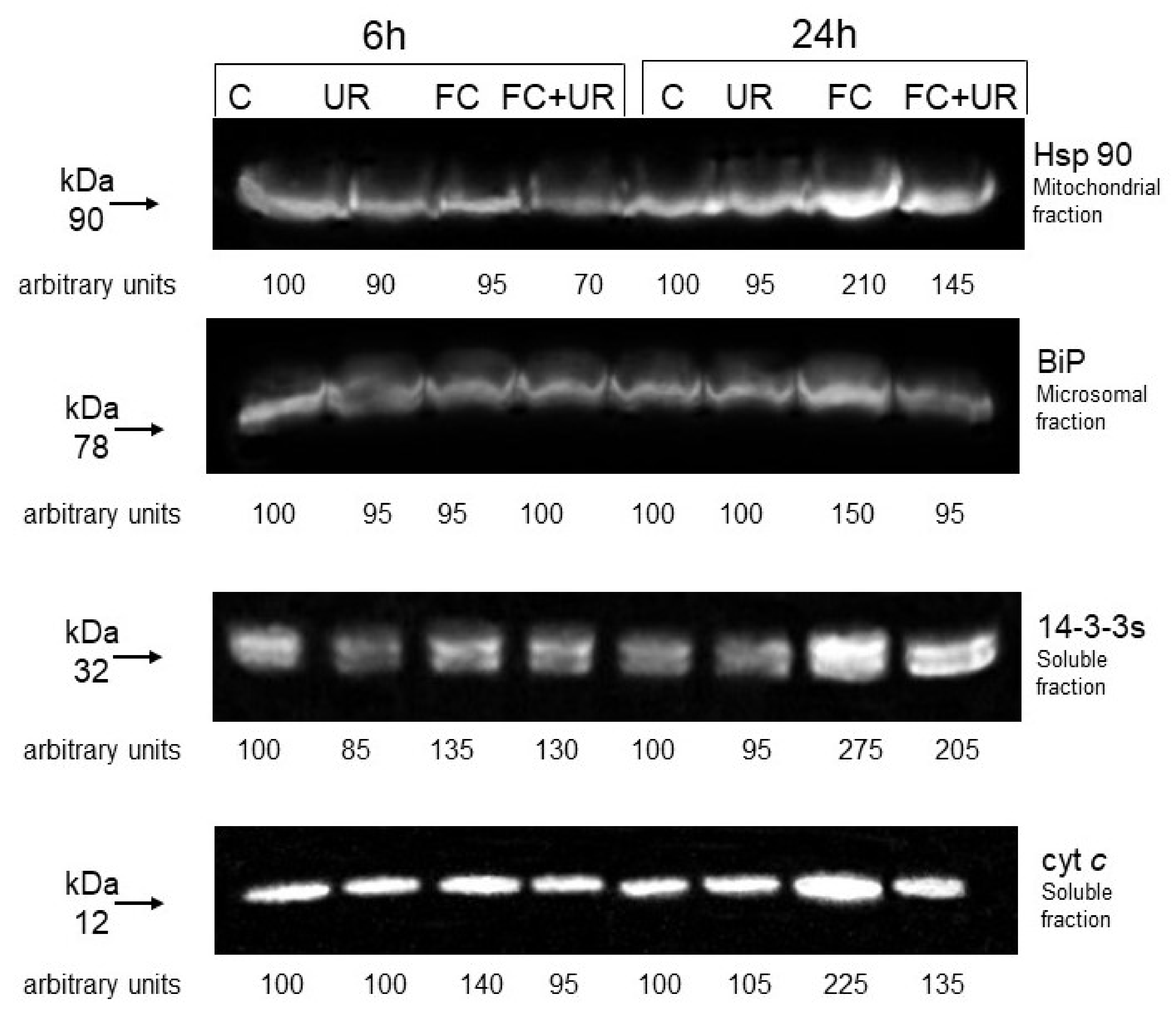
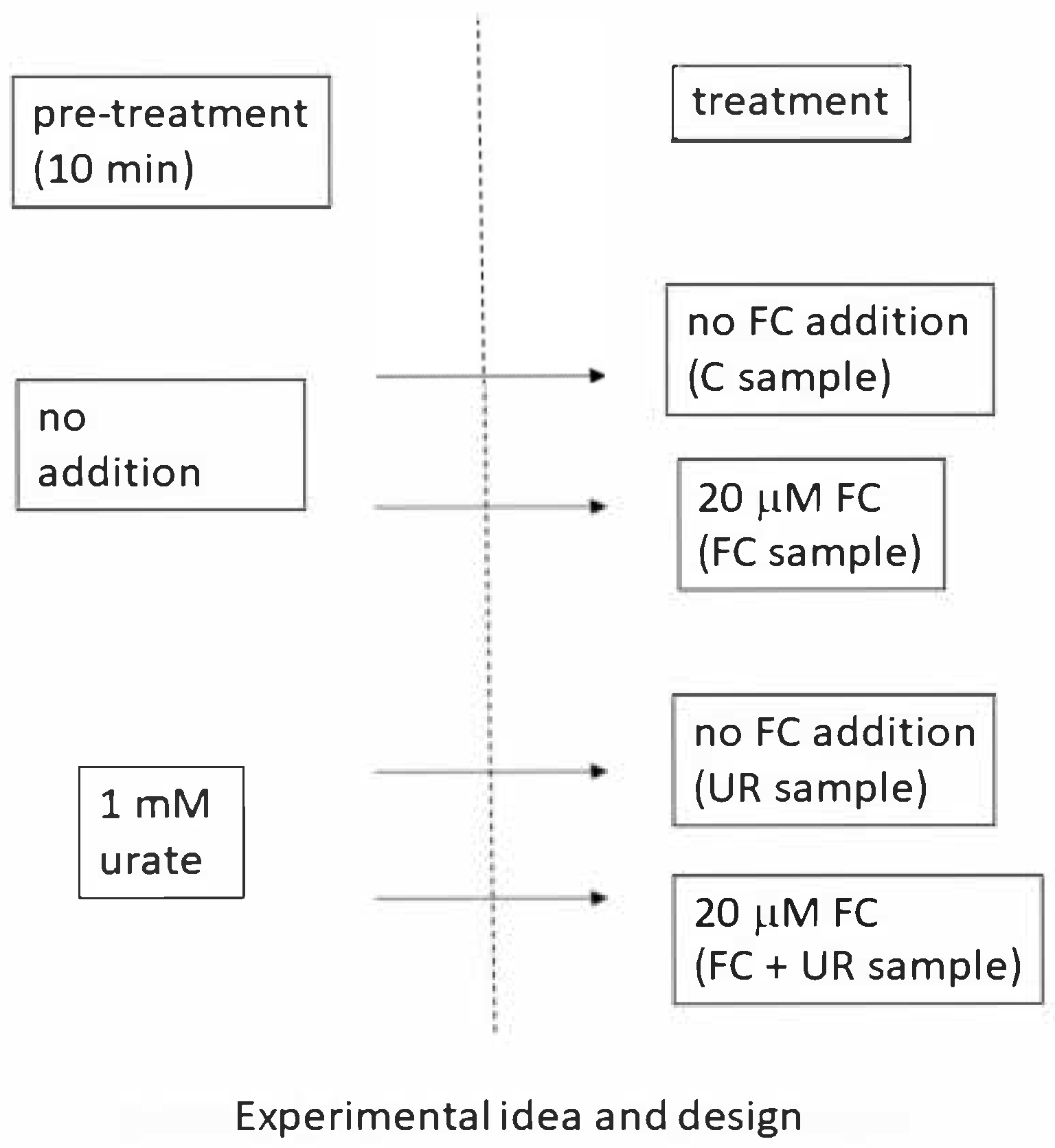
Publisher’s Note: MDPI stays neutral with regard to jurisdictional claims in published maps and institutional affiliations. |
© 2021 by the authors. Licensee MDPI, Basel, Switzerland. This article is an open access article distributed under the terms and conditions of the Creative Commons Attribution (CC BY) license (http://creativecommons.org/licenses/by/4.0/).
Share and Cite
Malerba, M.; Cerana, R. Possible Role of Peroxynitrite in the Responses Induced by Fusicoccin in Plant Cultured Cells. Plants 2021, 10, 182. https://doi.org/10.3390/plants10010182
Malerba M, Cerana R. Possible Role of Peroxynitrite in the Responses Induced by Fusicoccin in Plant Cultured Cells. Plants. 2021; 10(1):182. https://doi.org/10.3390/plants10010182
Chicago/Turabian StyleMalerba, Massimo, and Raffaella Cerana. 2021. "Possible Role of Peroxynitrite in the Responses Induced by Fusicoccin in Plant Cultured Cells" Plants 10, no. 1: 182. https://doi.org/10.3390/plants10010182
APA StyleMalerba, M., & Cerana, R. (2021). Possible Role of Peroxynitrite in the Responses Induced by Fusicoccin in Plant Cultured Cells. Plants, 10(1), 182. https://doi.org/10.3390/plants10010182




